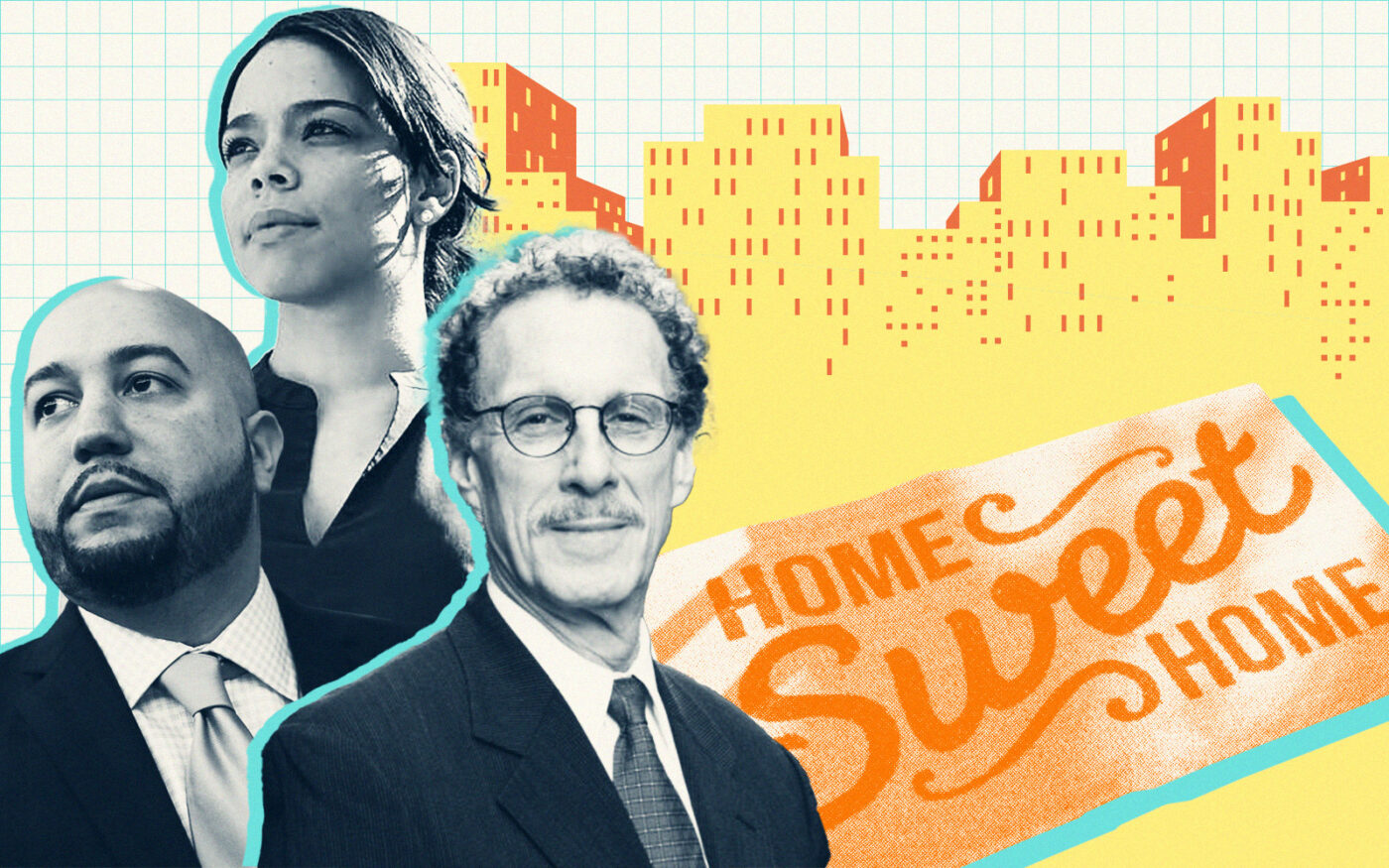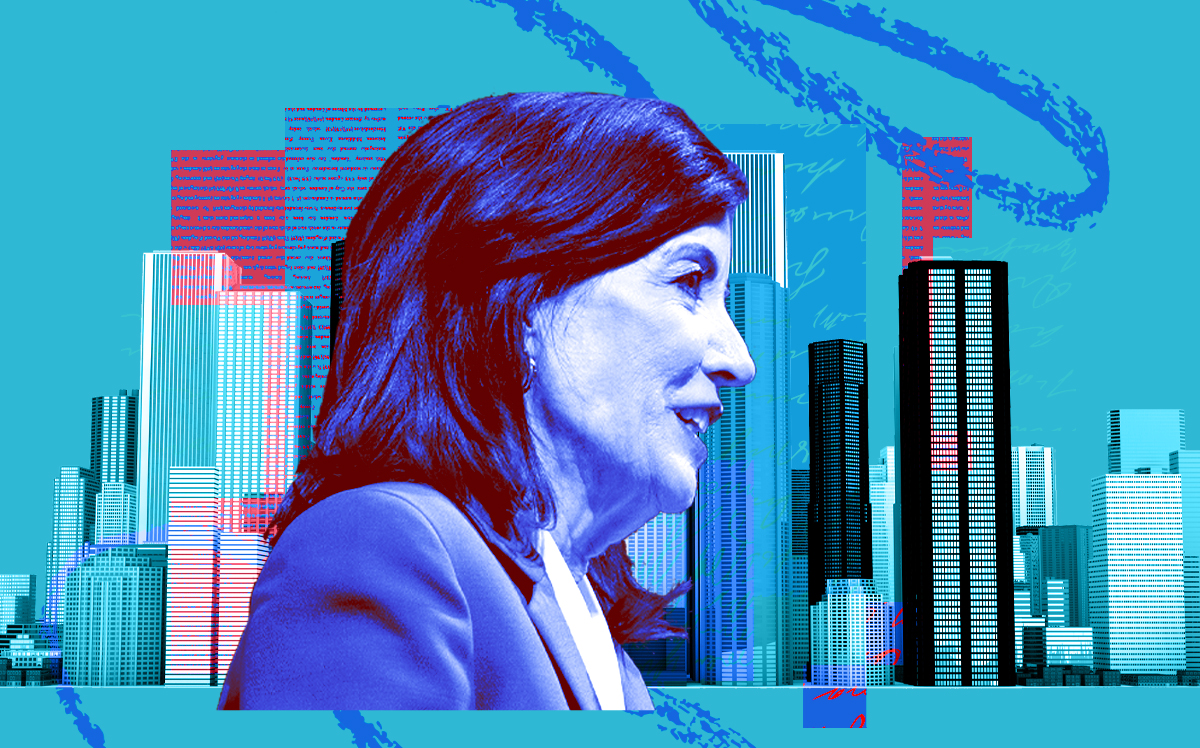Council, Adams administration clash on office-to-resi affordability
Progressive members say proposal ignores low-income communities

City Council members locked horns with the Adams administration Tuesday over the affordability requirements of a state-proposed tax break for office-to-residential conversions.
At a committee meeting, progressive lawmakers charged that the proposed affordability bands weren’t deep enough. But city officials didn’t budge in their support of Gov. Kathy Hochul’s proposal to require that 20 percent of apartments in conversions be permanently affordable to New Yorkers making an average of 70 percent of the area median income.
Only 5 percent of those units would go to households making 40 percent of the AMI, and the highest income band for affordable units would be 100 percent of AMI. That drew the ire of Land Use Committee Chair Rafael Salamanca Jr.
“Do you agree that 100 percent AMI is not affordable and if so, what income bands does the administration recommend?” he asked City Planning Commissioner Dan Garodnick, chair of the task force whose recommendations informed Hochul’s proposal.
Garodnick noted a “slight error in the premise of the question,” apparently referring to the fact that the 100 percent AMI band was the maximum, not the average, affordability band. He then punted the question to the city’s Department of Housing Preservation and Development.
“We believe that the [affordability] mix is a good mix for these kinds of projects,” said Brendan McLaughlin, HPD’s deputy commissioner for policy.
Salamanca tried another angle, asking, “Does the administration support the state’s tax proposal to incentivize the inclusion of affordable housing and office conversions?”
“We do,” Mclaughlin said.
As it often is for Council members, the rub is the level of affordability.
“Every single time that there is a major citywide proposal that leaves my community out, I’m starting on the offensive,” said northwest Bronx Council member Pierina Sanchez, adding that her district’s median household makes less than 30 percent of AMI. For a family of two, that’s $32,000, or about what a full-time minimum-wage worker earns.
“I hope that the administration will join in pushing the state to change these considerations,” Sanchez said. “Will you support me and my community?”
McLaughlin would only say that the program offered “a good mix of affordability for the benefit that’s being given.”
Neither side was inclined to mention the two elephants in the room: Requiring more affordability without providing more subsidy would render some projects economically infeasible, and keeping the status quo — no rezoning, subsidy or affordability requirement — would mean fewer conversions and only market-rate apartments.
Mark Willis, an economist at the NYU Furman Center for Real Estate and Urban Policy and former HPD deputy commissioner, said history has shown conversions of offices to market-rate housing can pencil out without subsidies.
But he said the state should pair an affordability mandate with a tax break, because doing nothing “would be a terrible waste of what is really a once-in-a-generation opportunity to provide affordable housing in neighborhoods that now offer very little affordability.”
Garodnick echoed that urgency.
“We do think it’s important for us to incentivize, because of its difficulty, the creation of affordable housing,” he said. “Here we have an opportunity to do it. We should do it.”
Another question is who should do it. The city could rezone areas with obsolete office buildings and high demand for housing, such as the Garment District, but it would take a year or more to go through the city’s land-use review and would trigger its Mandatory Inclusionary Housing law, which carries an affordability mandate but no subsidy.
The state, however, has the power to facilitate and subsidize conversions by merely passing a bill, which it can do in a matter of days, if politics allow. That’s a big if, given the number of left-wing senators who view property tax breaks not as a housing subsidy but as a giveaway to developers.
And not everyone thinks an end-run by Albany is a good idea.
“The state could authorize conversions in such a way … that would undermine the city’s carefully crafted Mandatory Inclusionary Housing program and undercut the city and City Council’s role in critical land-use decisions,” Willis said.
Orion Jones contributed reporting.







